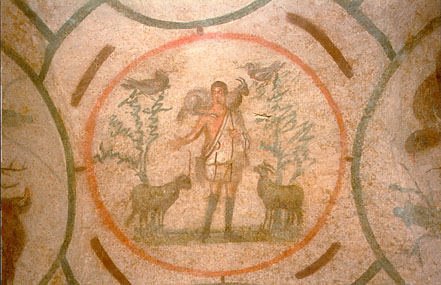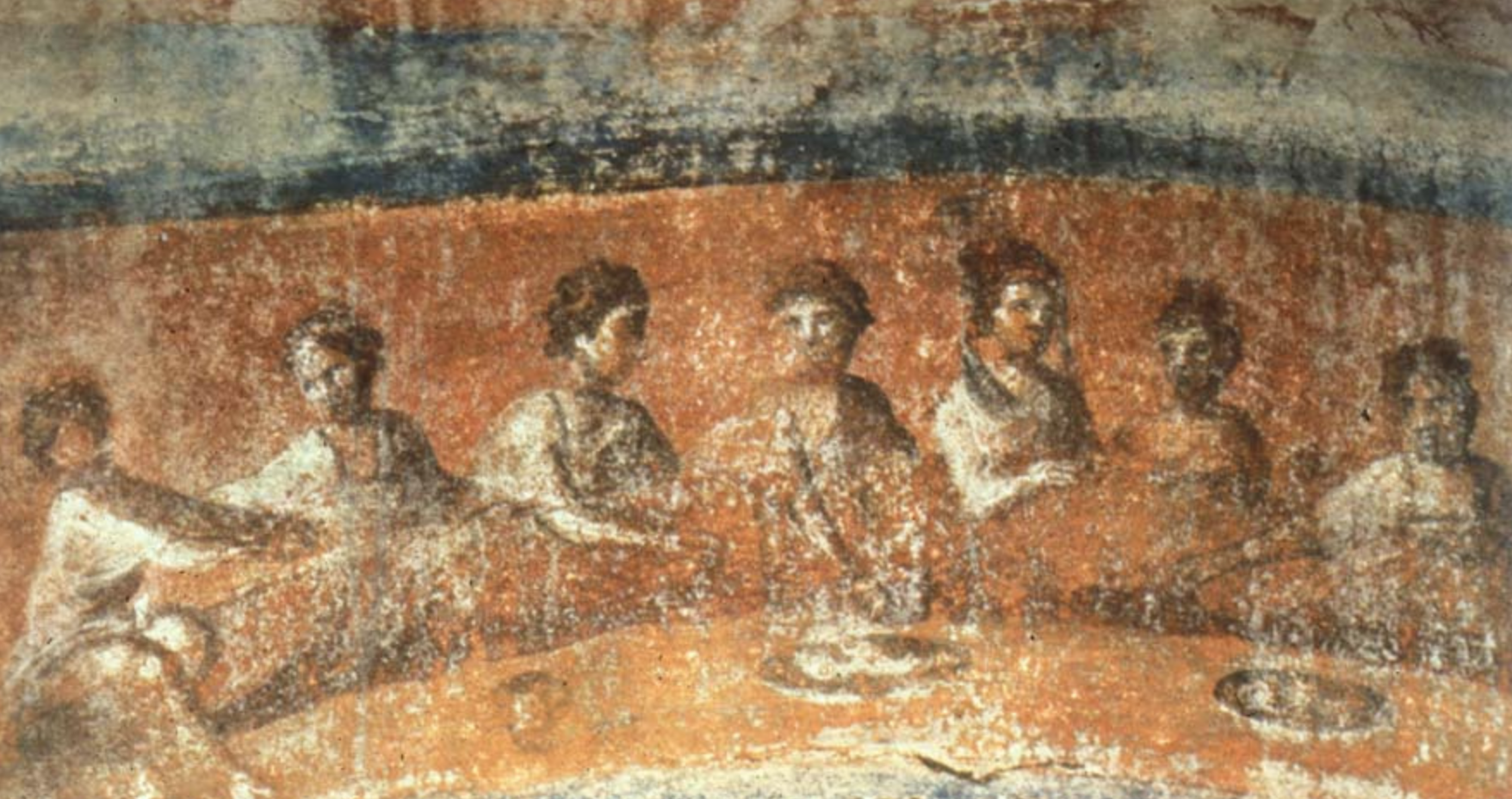We were, I believe, the only baby-carriers on the group tour, but between myself, Catherine, Ellie, and Martino, Stephen was sufficiently pampered and cajoled into submission. Our guide had the task of guiding 30-some-odd tourists through a labyrinth of dark caves and tunnels while making sure we all saw and heard what was of historical interest. Not an enviable task. Once again, there were no pictures allowed but I covered for Martino at one of the sites so he could snap a few. I also considered stealing bones but the tour guide thwacked away the only one within grabbing distance. I think I may be the sort of visitor that all the signs are designed to protect against.
As we went into the tombs, the unmistakable feeling of being in a cool damp cave provided something tangible to make the whole experience more real. For me, the catacombs have always functioned as something part way between myth, history, and art textbooks. Everyone knows about them, imagines them, and in a sense are the ultimate appeal to Christian authenticity. So in what way did the early Christians understand burial and worship, death and resurrection? These are the fragments and pieces that every historian and theologian has to grapple with in order to understand what Christianity was, and what it is.
There were far more graves here than I was expecting, from every strata of life. Around many corners there were fragments of Greek or Latin inscriptions saying things about how a husband misses his wife, or misses a child. One chapel was converted from wine cellar of an aristocratic household. As has often been the case in Rome, there is simply too much to know exactly what is happening or what one is seeing at any given point. The ancient character of all these structures used, transformed, destroyed, or rebuilt makes it impossible to have a clear picture of the whole. A few places down here, though, still have a distinct presence.
We saw two chapels in the catacombs and both were covered in rich symbols drawn from Biblical as well as mythological imagery. Even at the beginning, peacocks and the phoenix functioned as meditative images for the immortal life and resurrection found in Christ. Christ himself was pictured as a young beardless Good Shepherd. Jonah was being spat out of a large sea-monster (quite draconian in appearance) and the young men were shown triumphantly defiant in the furnace. But not only were biblical images portrayed as simple representations, already you see the use of the three wise men as a symbol of the Church's universality. These images are being used as exegetical modes to illuminate the mystery of Christ and his Church within a place of both death and worship. This is art born not out of any bare aesthetic impulse, but of the existential need to illuminate all aspects of life with the Word of God.
And here, underneath the modern city of Rome, there is still visible the oldest image of the Madonna and Child. Two-hundred years before the Council of Ephesus declared Mary the Mother of God, Christians instinctively pictured Mary with her Son with the utmost seriousness and devotion. We were able to see this 1800-year-old image in its ancient context. Also here is a beautiful mural of Christians gathering around a table with bread, wine, and oil, sharing the elements of the created order, elevated by Scripture and the Holy Spirit into a means of grace and a symbol of the Church's hope in the world, a feast of love.
Another thing that surprised me is that there are no plain representations of the cross. There are images intended to suggest the cross, such as the anchor but no stark realism as far as the instrument of Christ's death is concerned. Perhaps the reality of crucifixion as a means of execution was still to close or perhaps there was a concern that historical realism could obscure the real significance of the wood as the Tree of Life. After all, few of those who were at the historical crucifixion discerned its inner significance. Symbolism among the faithful is an act of belief that with revelation, history surrenders to the economy of salvation. An instance of death within time can in reality be the source of eternal life. The letter kills but the Spirit gives life.
And one final note from our time. This Sunday we ended up going to a papal mass in St. Peter's Square. Didn't know the Pope was going to be there.... and definitely didn't know that little Stephen would catch Pope Francis' eye and get a blessing. Here's a picture! Little Stephen is in the corner wearing an awesome denim suit.




No comments:
Post a Comment